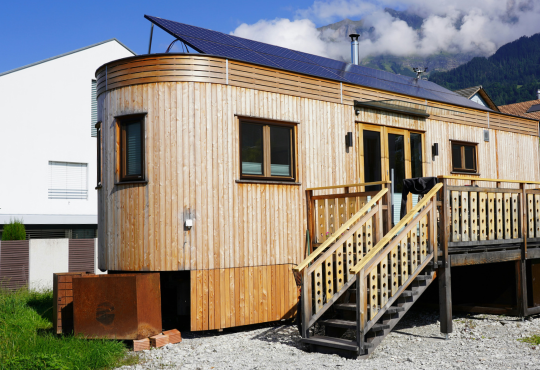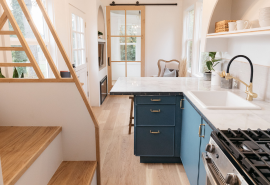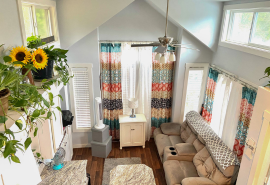Tiny homes
Tiny homes have become increasingly popular. The rules around them can be complex, so we recommend you read the Ministry of Business, Innovation and Employment's (MBIE's) Tiny houses – guidance information and resources.
You can also get in touch with us to talk about what you're thinking, as there may be site-specific issues for your project.

What they are
A tiny house is a very small home, usually custom-built, with all the main features of a regular house. It can be a:
- purpose-built small house
- converted trailer
- converted shipping container
- campervan, caravan, or bus.
Vehicles versus buildings
If your tiny house has wheels, it can be both a vehicle and a building.
If it doesn't move and people live in it permanently or for a long time, it’s considered a building.
To find out for sure, check the Ministry of Business, Innovation and Employment’s (MBIE) Guidance on Tiny Homes. If you’re still unsure, get legal advice.
Consents for tiny homes
If your tiny house is considered a building, you’ll need a building consent. The Building Act 2004 has rules for all buildings in Aotearoa New Zealand, including tiny houses. See Prepare for a building project for more information about what you’ll need to do.
You might also need a resource consent. See Apply for a resource consent or contact the Resource Consents team for more information.
Building a tiny house on the Kāpiti coast
You can build your own tiny house, but you’ll need a building consent.
Any plumbing, drainage, gas fitting, and electrical work must be done, and signed off, by a licensed professional. Check the Obligations and responsibilities of owner-builders and their building project for more information.
Other rules you’ll need to follow (whether building yourself or employing a builder) will depend on where you place your tiny house, and how you use it.
You need to consider the:
- Resource Management Act 1991
- Building Act 2004 (including the Building Code)
- Land Transport Act 1998.
Size
Even if your tiny house is less than 30 square metres, it’s still considered a dwelling, and will need a building consent.

Land ownership
The rules for tiny homes are the same whether your tiny house is on land you own or rent.
Services to your tiny house
Your tiny house needs to have:
- drinking water
- a sewerage system
- a stormwater system.
If there are Council services nearby, you must connect to them. If not, your tiny home must have independent water supply and sewage disposal. This may include potable, septic, and grey water systems.
Prebuilt tiny houses
There are prebuilt tiny houses for sale. If you’re looking at this option, make sure the builder has an approved building consent and a Code Compliance Certificate from the council where it’s been built.
The tiny house must be designed for the Kāpiti Coast site conditions (wind, earthquake, climate, and corrosion zones).
You will still need to apply for a building consent (and possibly resource consent) for foundations and connections to services.
Costs
Council’s building consent fees are outlined in our Building consent fees.
There might also be other costs, like development contributions and rates. Contact the Resource consents team for details.
